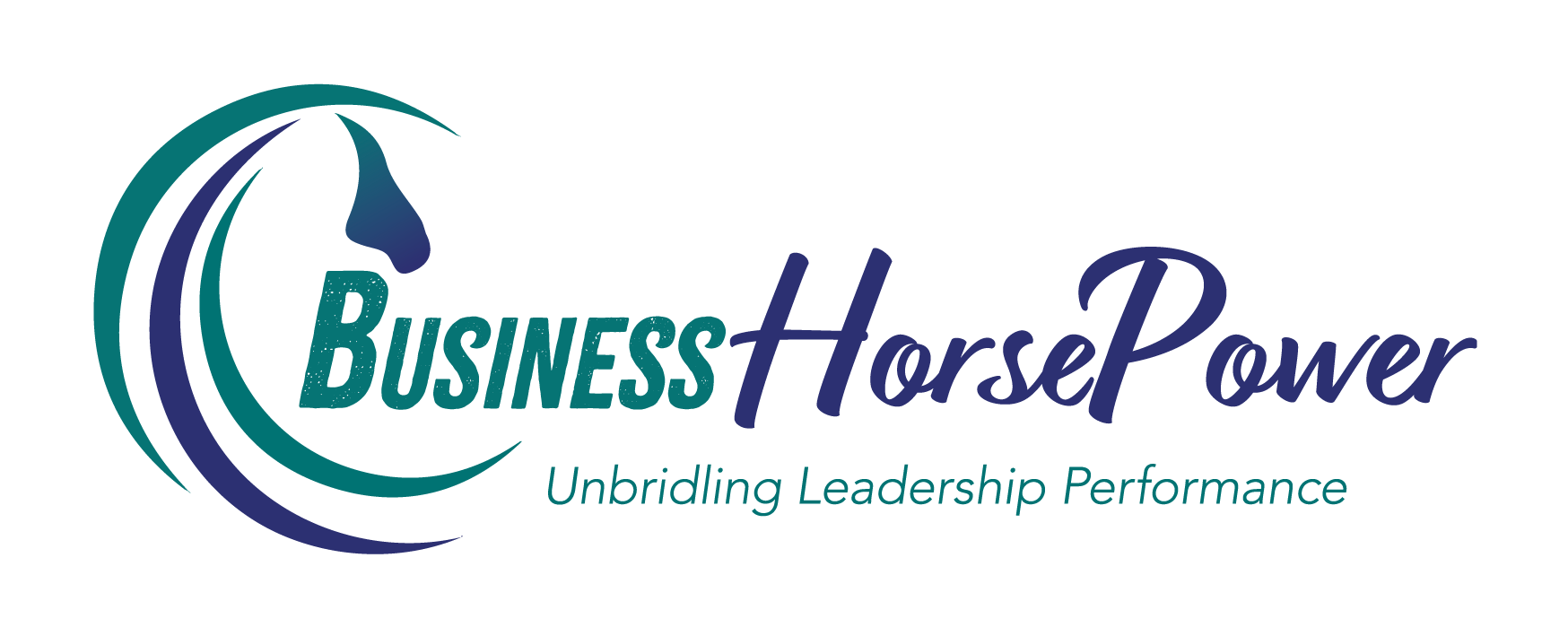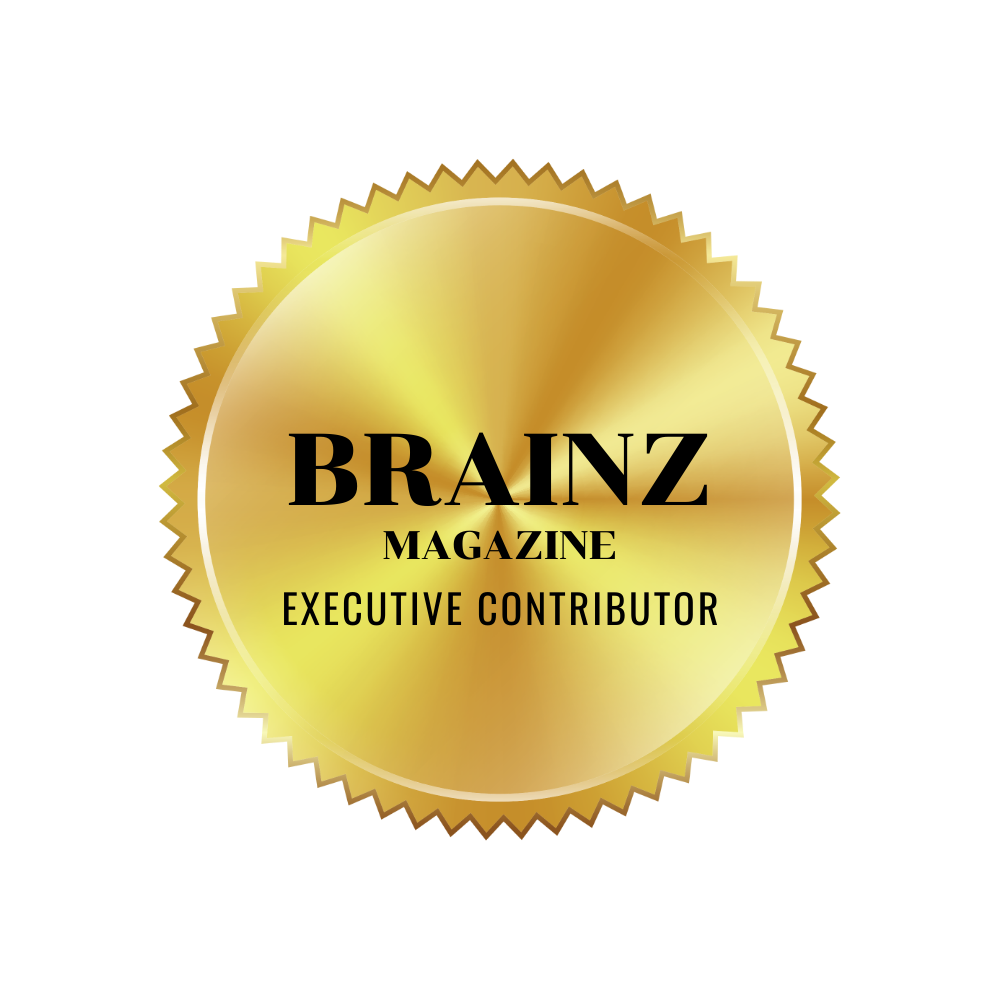
by Julia Felton | Apr 28, 2014
 The person on the phone wants to go over the contract she sent you. This is THE call you’ve been waiting for! However, looking at your cluttered desk and the bags full of paperwork waiting to be filed, you have no idea where the document might be.
The person on the phone wants to go over the contract she sent you. This is THE call you’ve been waiting for! However, looking at your cluttered desk and the bags full of paperwork waiting to be filed, you have no idea where the document might be.
You bluff your way out of the conversation (“Can I call you right back? I was on the other line when you called.”) and spend 30 minutes hunting for the paper. When you finally find it, you notice the stickie reminding you of action you were to have taken on the document last week. Yikes.
Now, where is her phone number? It’s on the back of this envelope, right? Maybe it was on the back of today’s lunch receipt…
Pretty scary! The wasted time and energy. The harsh self-criticism. The stress and embarrassment. The lost opportunities.
This office nightmare comes to life countless times every day by people who miss or ignore the direct connection between organization and success. It’s not just that organization allows you to move more easily around the office. Organizing your office and work life helps you fulfill your own potential and that of your company.
“Organizing is the process by which we create environments that enable us to live, work and relax exactly as we want to,” writes Julie Morgenstern, in her book, Organizing from the Inside Out. “When we are organized, our homes, offices and schedules reflect and encourage who we are, what we want and where we are going.”
For most people, the three biggest obstacles to an organized office and work life are: clutter (paper and email), planning and follow-through, the latter two being more an issue of time management. And while a disorganized office can be much like a disorganized schedule—overly packed, haphazard, limited in space or hours—it makes sense to organize space and paper first. Below are some tips for tackling office clutter.
If you’re starting from scratch—organizing the entire office and creating a new system—Morgenstern advises to first analyze the situation, taking an overall look at space, furnishings, equipment, supplies and types of paperwork. Ask yourself five questions:
1. What’s working? It’s helpful to know what’s not “broken” so that you don’t spend time fixing it. Also, a little “good news” is nice to hear.
2. What’s not working? Take a big picture approach here. It takes forever to get things done, because I can’t easily find what I need, so I work a lot of overtime.
3. What items are most essential to you? What do you need to have at hand? What papers represent the crux of your business?
4. Why do you want to get organized? These are the benefits you will derive from an organized office/desk. Less anxiety, more energy for work, more room for work.
5. What’s causing the problems? Some of the most common sources of office clutter: inconvenient or insufficient storage, no designated “home” for things, perception of not enough time to get or stay organized.
The next step is to strategize how to approach the things that are not working and their underlying problems. There are dozens of organization methods and systems; one might be just right for you, or you may be best served by mixing and matching ideas. In addition to Morgenstern’s, here are some books to consult for ideas:
The Well-Ordered Office: How to Create an Efficient and Serene Workspace, by Kathleen Kendall-Tacket
Organize Your Office! Simple Routines for Managing Your Workspace, by Ronni Eisenberg
The Office Clutter Cure: How to Get Out from Under It All, by Don Aslett
Organizing Your Work Space: A Guide to Personal Productivity, by Odette Pollar
File…Don’t Pile: A Proven Filing System for Personal and Professional Use, by Pat Dorff
Taming the Paper Tiger at Work, by Barbara Hemphill
For many, the biggest problem lies in maintaining an organization system. Stephanie Winston, author of Organized for Success, studied the habits of a cross-section of high-level executives across the United States, and recommends a relentless, laser-focused approach to processing paperwork—and even electronic communication—so that it doesn’t build up:
• Toss it. (Delete, if electronic.)
• Refer it. (Forward.)
• Act on it personally.
• File it. (Archive.)
To arrive at any kind of a sustaining system, Morgenstern writes, it’s important to understand and work with or around psychological obstacles to a clutter-free environment. These may include:
- Unclear goals and priorities. Organizing is about defining what’s important and setting up a system to reflect that.
- Fear of success/fear of failure. Disorganization may be a convenient way to hold back.
- Need to retreat. Clutter can be a protective shield to keep others at a safe distance.
- Fear of losing creativity. A common myth is that creative, “right-brained” people need to work in chaos to produce high-quality work. Balderdash!
- Need for distraction. Clutter can provide a convenient excuse to avoid uncomfortable issues or unwanted tasks.
- Need for perfection. Often, people won’t deal with clutter until it can be done perfectly. Translation: It will never get done.
Identifying these obstacles to an organized office and work life can go a long way toward creating an effective, lasting solution to clutter and disorganization. Along the way, you might just find yourself fulfilling your potential, too!
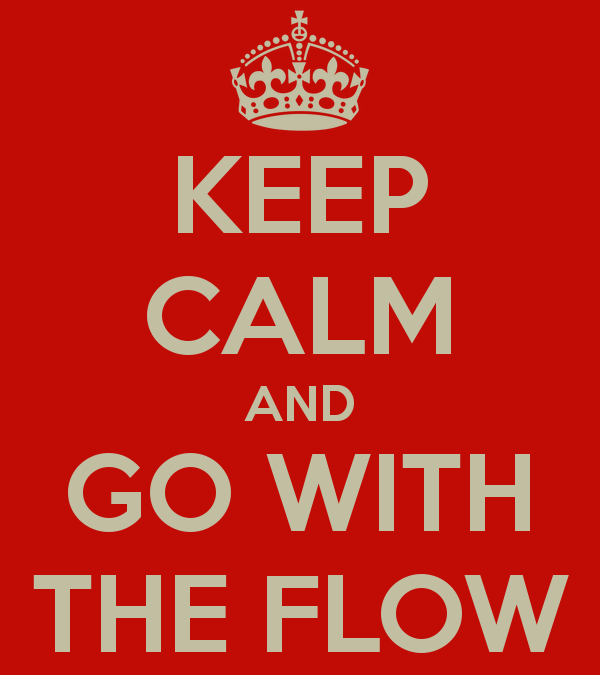
by Julia Felton | Apr 24, 2014
“We can’t solve problems by using the same kind of thinking we used when we created them” – Albert Einstein
When was the last time you experienced true flow? This would have been when you were doing something you loved and time just flew by. You were acting from your strengths and doing something that you were TRUSTed in delivering. How would it be if you had a process to tap into your floe whenever you wanted? Then great, tread on as getting into a flow state does not need to be by accident.
In his book, The Rise of Superman, Steven Kotler, a super-expert on flow describes how elite athletes and extreme sport-people get into flow, and what we can learn from them. Stephen has teamed up with many of the leading action and adventure athletes along with top scientists to decipher what these athletes are doing to harness flow.
What does this mean to you and your business? How can flow improve your results? Steven calls flow “the source code for our intrinsic motivation” and he cites many studies from McKinsey to the US Army, that have found that people who harness their flow state can increase productivity and results by 200% to 500%=.
As the McKinsey Quarterly states: “The opportunity cost….is enormous….Most report that they and their employees are in the zone at work less than 10% of the time. (But) if employees….are five times more productive in flow than they are on average, consider what even a modest 20-percentage-point increase in flow time would yield in the overall workplace productivity- it would almost double”.
Here are the four stages that Steven explains that we go through in order to get into flow:
Stage One – STRUGGLE
The first stage of the four stage flow cycle seems like the opposite of flow. This is when you’re working hard, pushing to train, research, brainstorm – when you’re overloading the brain with information until it feels like your head is about to explode. Most people never push past this first stage far enough, why is why they constantly miss the doorway to the flow experience.
Stage Two – RELAXATION
This is when you take your mind off the problem entirely, taking a break, going for a walk or doing something physical. Thsi isn’t the same as watching TV or some other distraction that keeps the brain busy. It’s about relaxing the brain so the conscious mind lets the subconscious mind take over. Many people miss this break and as a result are constantly in overload and burnout missing flow altogether.
Stage Three – FLOW
This is the superman experience when inspiration takes over and where your preparation and relaxing express themselves almost magically. You come up with the best ideas, you achieve results almost effortlessly, and you often surprise yourself by your own performance. It’s almost an out-of-body experience whether it’s a mastery of a physical, emotions or mental activity.
Stage Four – CONSOLIDATION
The final stage is where learning and memory is amplified dramatically, consolidating the experience of flow into your unconscious. There’s also a downside, where you come off the high of the feel-good neuro-chemicals released during the flow state. You go on a down which often leads to self-sabotage or an emotional reaction to try and regain the flow state. the key here is not to let this stress block the learning or reverse the results of being in flow, but to move smoothly back to the next phase or struggle and repeat the cycle.
Most people aren’t aware of the four stage cycle and so we end up either not getting into flow, or we mess things up when we get there. Knowing the cycle exists gives you a mp to know where you are, and what to do at each stage.
What challenge or task do you have where it would really help to step into your flow to conquer it? Use these four steps to get going today and please let me know what happens.
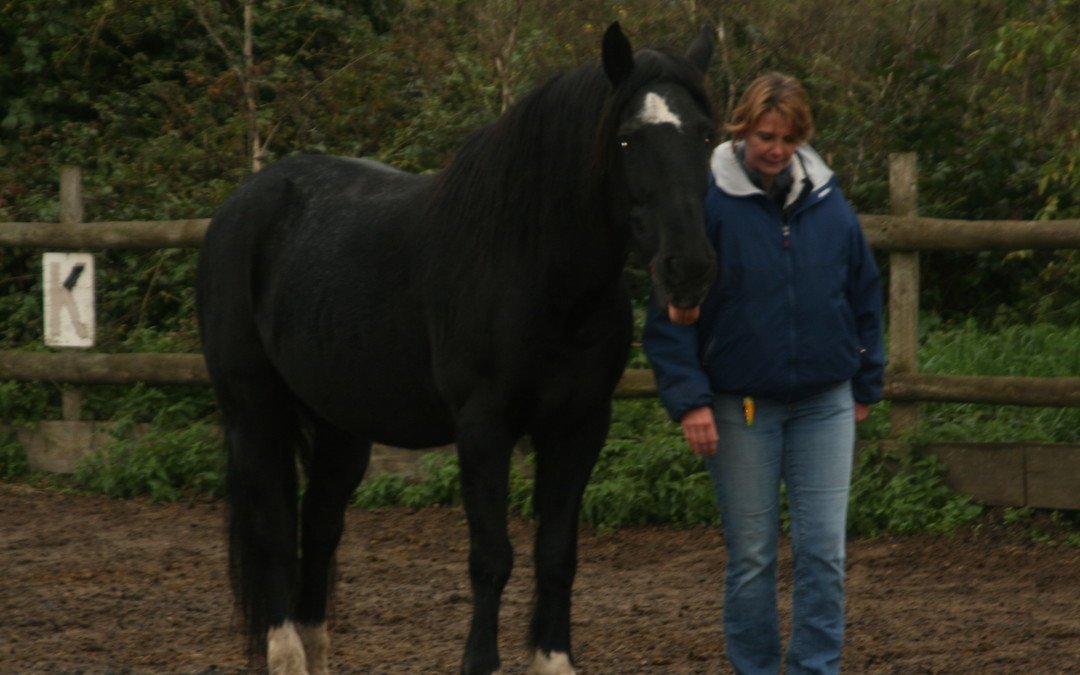
by Julia Felton | Apr 22, 2014
Managers (… and others..) can learn a lot during horse – assisted training. Approaching horses, watching their reactions to our behavior, touching them, smelling them, leading them with or without a rope – this is a very special experience which brings people “down to earth”. Contrary to schooling in classroom where participants are mostly rational decision makers the context of horse – assisted education opens the emotional side of people. The authentic feedback of horses provokes reactions and insights for the participants which touches them deeply. That’s why horse assisted education is a very valuable completion of classroom seminars. In role plays in the classroom people often play a role – they are not authentic and are not open to really face their personal problems and challenges.
The following case study will highlight what I mean by integral leadership training: I will tell you the story of Lukas, a participant of a two day seminar: “Successful conflict resolution”, followed by a workshop with horse – assisted education.
My boss does not pay much attention to me… how can I attract more attention and recognition ?
Confession in the classroom
Lukas was one of nine participants with banking and insurance background who attended the seminar: “Successful conflict resolution”. At first sight he appeared to be a nice guy, polite, very intelligent (classical scholar with double PhD), very interested to communicate with the other participants, very engaged during the exercises and role plays. Overall, he left a rather shy impression, which showed also in his stooping posture.
At the end of the first day, Lukas had gained enough confidence to tell us about his actual problem at his workplace. He was assistant of the management board of a bank and his task was delivering profound analyses and background information – he told us how he was fascinated by his task – he was sure he could deliver competent information based on his long experience in the field. Unfortunately, he was seldom praised – even worse, his boss, an ambitious young woman, only used his work to create an image for herself. He admitted that he was now no more motivated.
First encounter with the horses – his favorite horse being Santana
It is always very interesting to watch the participants whom you know from two days classroom seminar in a totally different environment during their first encounter with the horses. Most of them are really looking forward to the new experience. Others are sort of nervous to meet the horses and ask themselves if they will be able to lead such a big animal. A few are in fear of horses and tell me in advance that the observer role will be alright for them ( in most of the cases they change their mind and will ask me “What do you think, if I try myself ?”…).
Lukas was very eager from the very beginning – he told me that he didn`t have any specific experience with horses but that he was always fascinated by these proud and elegant species.
During the first exercise participants are watching a group of horses which play around in a riding arena. This exercise is useful to get a first impression of the horses. The task is to watch the behavior of the horses very carefully – are there any differences in character? – which horse attracts me most? During this exercise every participant can choose his favorite horse for the following exercises. Lukas` choice was Santana, a very elegant mare with beautiful expressive movements. I asked him why he chose Santana? “That is very clear, I am fascinated by her elegance and assertiveness – did you see how Santana reacted when this brown little pony wanted to bite her? … she just kicked out at him. I also chose Santana because of her gentle expression on her face..”
Lukas and Santana – not a dream team yet
The exercise is to lead the horse on a rope, individually. The participant has to walk through different obstacles with the horse: turn around poles, pass through small obstacles, walk over tarpaulins on the floor. Lukas was very eager to do his job with Santana – his eyes sparkled like a little child when he took the leading rope of Santana. Only seconds later the expression of his face changed dramatically: Santana was not willing to follow him. He tried to motivate her by gently moving the leading rope.. no chance – he did not know what to do. He tried some other timid movements, without success. He tried to talk to her – no chance – discouraged he watched the group.
I asked him: ..” Do you think the horse knows, what you want from her?” Lukas seemed to understand.. “ok, I will show her what I want.. I will take a leading position, walking in front of her”…with timid movements he made some steps forward – seemingly not convincing enough. Meanwhile, Santana took a very uninterested stance and did not move. Poor Lukas was in a quite desperate state … I asked him: .. “Do you think the horse can recognise your full presence and determination?” Lukas seemed to think about this and suddenly changed his posture, he appeared much more focused now and -.. no surprise.. Santana started moving and followed Lukas… up to the second obstacle where Santana stopped again. This time it was Lukas who gave the explanation himself: “I can tell you why she stopped.. I was very uncertain if she would pass through the second obstacle … how can I take a leading position when I am uncertain and even in fear?” Now Lukas made his way with Santana very determined and we could watch how he enjoyed realizing how easily the mare followed him – finally Santana had accepted him as her leader.
Lukas` statements after his exercise
Deeply touched and still very excited, Lukas told us how he lived these 10 minutes: “In the beginning I was quite in despair– I approached Santana so gently but I could not gain her confidence – I had no authority. Only after I was totally despaired about the failed trials I had the energy to get through and to be finally respected. I am sure Santana could feel that I was clearly focused on reaching my target. I am very happy now that I succeeded to move her, finally – may be that is also true for my life: I have to stand up and signal very clearly to others what I want!”
What we learn from this story
Already in the classroom Lukas had told us from situations at his workplace where he was not much respected despite his broad experience and competence. The exercise with the horse showed him a way how he could increase his assertiveness.
Typically, Lukas chose the mare with a lot of expression, who showed that she is able to defend herself … characteristics Lukas would like to have himself, as well. During the exercises Lukas could learn about the importance of determined body language and clear target oriented action – there was a clear difference of his presence – before and after.
I am always impressed, how the lessons taught by horses are so easily accepted by people – may be people think, “Well, its only a horse which reacts.”
That is a real advantage of horse- assisted education – horses can mirror people the unvarnished truth and it is accepted quite easily. For me as a coach or another participant it often needs a lot of diplomacy and fine feeling to bring the message to the point.
Working with horses we are not only focused on rational thinking but we are also touching the emotional side of our participants. As newest research about limbic learning shows us the emotional involvement is a prerequisite for inner acceptance and finally for change of habits or behaviour.
Conclusion
Horse – assisted training is a most valuable completion of classroom seminars. To be efficient and sustainable the process of coaching and training is most important – horse assisted training must be embedded in a clear context: starting with a clear statement about the status quo and the personal targets of the participant. Previous classroom seminars often bring up important issues and targets for horse – assisted education. Another possibility is a well coached brainstorming with the group prior to the horse seminar. Most important is the reflection during the horse – assisted training session : by the participant himself, by the group and the coach. Videos are a useful tool to reinforce the reflection – nobody would be able to explain your non-verbal communication and appearance better then when you watch yourself on the video… ! Insight is one thing… change of habits another! So it is most important that the insight process is followed by a clear transfer plan – a plan which must be developed by the participant himself – because only he is able to know how far he is ready to initialize change– the coach is only the motivator of this process.
In the transfer process we have another valuable effect of horse – assisted education: the situations lived with horses leave a deep impression on the participants – the success stories with the horses serve as a clear anchor – the inner pictures of successfully leading Santana, Prince or whatever the name of the horse is, will encourage the participants to be more self – assured and determined.
By Dr. Barbara Gorsler, Management Trainer, Dietlikon, Switzerland

by Julia Felton | Apr 15, 2014
“The men who have succeeded are men who have chosen one line and stuck to it” – Andrew Carnegie
When running your own business there are so many aspects to focus on, how do you know which one to prioritize first. Well, I always tell my clients to focus first on the areas of the business where they are most TRUSTed. The areas where you are most TRUSTed in business are the areas where your natural talents lie.
There are four different areas
- Innovation Trusted
- People Trusted
- Service Trusted
- Detail Trusted
So which are you?. If you don’t know jump over now to http://bitly.com/trusttest and take a quick five question assessment which will immediately show you where you are most TRUSTed in business. And the great news is it is FREE.
Where you are most TRUSTed is where you are already naturally talented and capable of doing tasks with ease. People know they can rely on you in this area and for you it usually feels fun and energising. You could carry on doing these tasks all day and you would still feel energised at the end of it. It might even feel easy to you.
When you focus time at trying to build TRUST in the area where you are least TRUSTed because its the thing that comes most hardest to you to develop, you will find it tiring, hard work maybe even stressful over time and you will find it much harder to build Trust. So it’s ironic that often we are told to develop our weaknesses.
I know I was guilty of making my team in the corporate world focus on improving their weaknesses when in fact they would have delivered so much more value to my business unit if they had focused on developing their strengths and using their talents.
So what is your business success?
Each of the four types have a different type of business that they find greatest success in. You can be successful in many businesses where you are working with others in a team. But if you want to run your own business, your Trusted Talents will make you best suited for one of these environments:
Innovation Trusted love creative businesses
Ideas Smart. Energised, dynamic and great at getting things started. Finishing them can be a challenge. Eg Albert Einstein and Richard Branson.
With constant change and innovation. Whether it is a product or service based business, the most important thing is to have the freedom to create and express yourself.
Excels at strategy setting and product creation
People Trusted love people businesses
People Smart. Passionate, outgoing, great at networking and meeting new people. Easily distracted from the task at hand eg Marilyn Monroe and Oprah Winfrey
With ongoing contact and interaction with people. Whether it is from the stage or on the road, the most important thing is to be in front of people face-to-face.
Excels at sales and marketing activities
Service Trusted love trading businesses
Senses Smart. Compassionate, grounded, great team player and reliable at getting things done with the team. Often gets lost in the activity eg Nelson Mandela and Mother Teresa
With constant activity and quick response. Whether it is trading the markets, serving in a restaurant or saving lives, the most important thing is serving and reacting to the moment.
Excels at customer service and managing relationships
Detail Trusted love systems businesses
Process Smart. Orderly, systems orientated with a good eye for detail, strong at completing. Can find it difficult to start new things eg Mark Zuckerberg and Benjamin Franklin
With ongoing analysis and smooth systems. Whether it is working online or behind the scenes, the most important thing is to be in control of the system and details.
Excels at accounts, systems, data and detail
Just like a wheel of life, which I’m sure you are all familiar with, to my mind there us a wheel of business. You need to ensure that all the activities in your business are balanced. I can’t tell you how many businesses I have seen where the mix of energies has been unbalanced and as a result success is unable to flow. Just imagine a business owner who spends all their time focusing on their sales and marketing. That might be great as they are attracting in clients, but if they don’t have any method of staying connected to the client (service TRUSTed) or any way to manage the cash in the business (detail TRUSTed) the business will falter as it will fail to invoice and collect payment from any clients and also the client acquisition cost will be really high as failure to stay connected to previous clients means they will go somewhere where they are more valued.
So I would urge you to go and look at your business and marketing plan for year. I’m sure you have all created one right, and just make sure that all your activities for next year are balanced and aligned. And if you need any help then I would suggest that you contact me about my new IGNITE your business days where we get deep down into your business and put some rocket fuel behind your plans for this year so that we can catapult you to success because remember
Fail to Plan, Plan to Fail
Remember you can take the TEST Test at http://bitly.com/trusttest, and let me know where you are most TRUSTed in business.

by Julia Felton | Apr 8, 2014
“Don’t mistake movement for achievement. It’s easy to get faked out by being busy.
The questions is: Busy doing what?” – Jim Rohn
Everyday I see entrepreneurs and business owners being busy and I often wonder if they are really being effective. You see being busy and being effective in business are not the same. It’s easy to be busy doing other peoples things or activities that are not driving you towards your dream and goals. As entrepreneurs it is also easy to get seduced by the “bright shining object syndrome” what I affectionately call Entrepreneurial ADD. This results in a lack of focus and engaging in tasks that don’t drive you towards where you want to go. Sure as an business owner you need to be open to all possibilities as opportunities can appear from the least expected places, but when you are not clear on what you want the right opportunities in my experience never show up, just distractions instead.
In his highly acclaimed book on effectiveness, “The 7 Habits of Highly Effective People“, Dr Steven Covey makes a clear distinction between what is urgent and what is important. Covey outlines a 4-box matrix with Urgent on one axis, and Importance on the other (see the image).
Most people who are feeling like busy fools are making one of two mistakes in respect of Covey’s matrix: they are putting all their effort into completing Urgent tasks, or they are failing to identify the Important ones. Urgent tasks are those that have a deadline approaching, while Important ones are those that get you where you want to go in the longer term.
Covey says we should be spending most of our time in quadrant two – “Urgent AND Important”. And he makes a very important point: if we are dealing with quadrant two items while they are not yet urgent, we should never have anything in quadrant one at all. And where we can get the time to work on quadrant two stuff, to stop it leaking up into quadrant one, is from quadrants three, and particularly quadrant four.
The trick, of course, is to understand whether the “importance” of a task, or a project, or a business, relates to *your* long-term objectives, or those of somebody else. So before you put something to the top of your priority list, make sure you are doing it for you.
Another important distinction to be made here is that as a business owner marketing and sales are always activities that should be in quadrant 2. If you are to avoid the roller coaster of cash flow that many business owners experience you need to ensure consistency in your sales and marketing activities so that you are always working on income generating activities. After all your business won’t survive if you don’t have any customers.
Avoiding being a busy fool means s focusing on these Important and Urgent tasks daily and engaging in income generating activities. Only then will you create a successful business that fuels your dreams and goals, and yet time and time again I witness business owners being busy by finding activities to do that stop them focusing on this quadrant. This is a classic case of procrastination, something we will look at in another article.
So for today, be clear on what you want to achieve and stay focused on this path. Stop being busy doing other peoples things or tasks that don’t lead to your success.
I’d love to hear about what you are focusing on today.
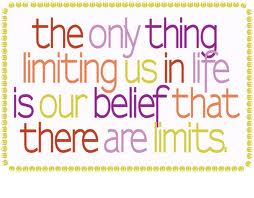
by Julia Felton | Apr 1, 2014
With the Spring Equinox just passed it seems appropriate that the last two weeks have seen lots of transformations happening at Business HorsePower – both for me personally and also for my clients and horses. As the weather warms up the horses are beginning to shed their winter coats and lose the woolly mammoth look they have had over the winter and soon will emerge as sleek, refined animals. As I’ve been watching the process I observed how for my young pony Bracken in particular losing her coat is tough. It makes her really itchy and so she spends all day scratching herself and rubbing herself on the fence posts.
I’ve also been noticing a similar trend with my clients – no they haven’t been scratching on the fence posts! – but as they have been losing and shifting their beliefs particularly about money and it hasn’t always been comfortable for them. You see our limiting beliefs are just like a nice, woolly coat. They keep us safe and warm. We think that they protect us and for some time they serve that purpose. But eventually, if we are to grow and develop, we need to shed them and find a new coat to wear. One that serves us for the current season we are living in, and not the old season that has gone by.
You see many of our beliefs are established when we are children and are often adopted from our parents and our primary care givers. Whilst these beliefs might have served us as a child many of them are not serving you now. So what are your beliefs? Are they those of an adult or a young child? Do you have a 12 year child running say your relationship with money, or is it an adult? If your inner child is still running your relationship with money, you might want to lose that woolly coat and find a new one that better serves who you are right now.
This is exactly the experience that one of the private clients had last weekend. Whilst we were working on his business and creating new marketing systems and strategies it became clear that his relationship with money was still being run by a 12 year old child. It was fascinating and rewarding to see the transformation my client made as they shifted these old beliefs and transformed their relationship with themself and money. They are now empowered to move their business forward and charge what they’re worth for their services. That’s a real transformation and one I was privileged (with my horse Toby’s help) to facilitate.
I’d love to hear which limiting beliefs you want to shed this Spring.
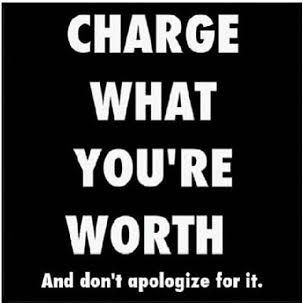
by Julia Felton | Mar 25, 2014
Since I have declared March as Money Mastery Month it seems only appropriate that we should close this month with my best tips to help you Charge What Yo Worth And Get It. Women in particular often struggle with recognising their real value and then getting appropriately rewarded for it. Money is such an integral part of your business (and your life) that it is one of the cornerstone of what I teach at Business HorsePower. You simply can’t have a successful business without getting into relationship with money and knowing your own worth. Dis you know that your net worth is a direct reflection of your self-worth. So whether you have a JOB or run a business if you are not earning what you want I would urge you to look at how you are valuing yourself.
Here are my top 10 tips for helping you get into the mindset of Charging What You’re Worth:
- Know your big money WHY.
- Understand that YOU are the first person you have to convince of your value, not your client. When you truly understand and believe in the value you provide, you will have no problem conveying this to your clients.
- Know the transformation you provide for your clients, THAT is the value and that is what you must focus on not how you do it. Your clients do not care about your process, they only care about the result.
- Focus on ONE specific topic and get outstanding at that and then you can always charge more. It doesn’t mean this is the only topic or service you will ever provide, but you want to go deep in one topic first, gain visibility and credibility and then branch out from there.
- Give your prospective clients different ways to say “YES”! I recommend offering 2-3 packages so your clients have options to work with you.
- Know when it’s time to increase your fees. Did you know that you could be getting too many “yeses”?? I know that sounds crazy, but it is absolutely true!! Too many “nos” would mean that you are inappropriately priced (too high), targeting the wrong customer or not properly communicating the value of your services. However, too many “yeses” means you are inappropriately priced (too low) or not selling enough! If about 15% of your prospects are not currently saying “no” because of price…..it’s time to increase your fees!
- It is a great thing to love your clients, but don’t confuse love with giving a discount. Instead of giving a discount, give them extraordinary service, a shorter time frame or any number of things that will increase value, not decrease your fee!
- Do not discuss price with your prospective client until you have had an opportunity to “diagnose” their problem. As an expert professional you never present a solution (or prescription) until you and the prospective client are very clear on the problem they want solved
- 80% of your income will come from 20% of your clients….focus on the 20%
- Because most entrepreneurs (especially women) are undercharging, do not compare what you should charge with what others in your industry are charging….this is not a good strategy.
I really hope you find these useful and as always please leave me comments on which tip you found the most useful.
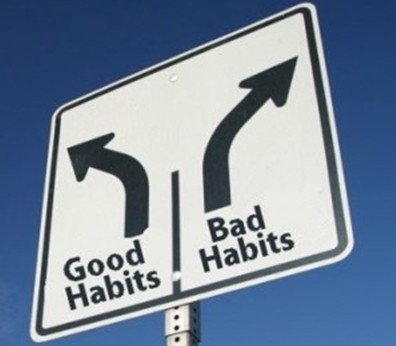
by Julia Felton | Mar 11, 2014
Mastering your money mindset can make such a massive difference to your business success and yet time and time again I find clients avoiding dealing with this difficult topic. I get it. Dealing with your money issues can be challenging. For me personally I have recently realised that I am an running a lot of shame around money. (Thanks to Brenee Brown and her amazing book The Gifts of Imperfection for helping me name this). Shame that my parents sacrificed lots to give me a good education I’ve now acknowledged is a big issue for me. And if I’m not careful this impacts all areas of my business from not charging enough for my services, to running over on sessions and giving away lots for free. An under-pinning theme of I don’t deserve it pervades and although I’m making strides in this area, it is and will always remain a work in progress. I think this is true for all aspects of our lives.
Clearing the emotional clutter associated with money takes time and this is what we will start tackling in the Master Your Money Mindset MasterClass this weekend, however it is also great to be able to put in place practical habits right now that can start moving you towards your goal.
Here are 6 simple and powerful money habits that you can implement right now that will make a big difference to your business success:
Track your income regularly. Most people advise you to track your expenses – and that’s cool too, but I find it a lot more fun to keep tabs on my income! What this does is gets me in the mindset of expecting and creating money regularly—even daily—simply because I don’t like seeing too many zeroes on my tracking sheet! I love playing games and seeing how many days that I can have money coming into my life. Some days it might just be a 10p coin I found on the ground, other times it might be through multiple income streams. Every woman should have at least 3. The more you have, the more frequently money will come in. By tracking your money regularly, you can see where it’s coming from and how to create your increase!
Automate your savings. Don’t just take your spare change to the bank. That’s what teenagers do. Instead, have your bank auto-debit your savings account at least once a month. This takes one more thing off your to-do list and before you know it you’ll have a nice chunk of cash put away. If saving automatically is already a habit, I challenge you to increase what you save each month by twenty-five percent. Don’t worry if you can’t afford to save much each month, what is more important here is the action than the amount. The action of just saving signals to the universe that you want to save. In the early days of my business I was only saving £10 per month.
Use coupons and vouchers. I used to think that coupons made me look like a cheap-o. Now I know better. Trust me, always use your vouchers and coupons. Create a place in your purse where you keep them all and then you won’t forget to use them. I can’t recall how many times I have forgotten to use the vouchers simply because I had left them at home. Don’t do this. These vouchers and coupons are money and should be treated with respect just like your money. And use then innovatively. Recently at Rideaway they offered me a £15 discount when you spent over £100. So I split my purchases into two and so got a massive £30 off my shopping. (That paid for my pony’s new, leather headcollar – nice!)
Stop money leaks. A money leak is any kind of fee, subscription or service charge you’re paying even if you are not using the service. Stop this from happening now. I know it may seem like a hassle to have to call or write to cancel the service but it is worth it. The money that’s slipping through your fingers adds up and I’d rather see it going into your savings account rather than to the gym you haven’t been to in 6 months. So every 90 days or so, scan your credit card statement to make sure there are no leaks. Also look at your service providers, are they providing the best deal? I recently changed webinar providers and this has saved me literally hundreds of pounds per year. Where else can you save money?
Clean out your wallet and your purse. A junky purse and wallet is a sign of insecurity and indecisiveness. The bottom line is this: the place where you keep your personal and most valued belongings should be clean, not cluttered with old tissue, gum wrappers, receipts, mail and your children’s toys! Money will not thrive if its surrounded by chaos. Take 10 minutes once a week and get your purse and wallet in order, ok?. I’ve been following this practice for the last year and I can’t tell you what a difference it has made. Money loves hanging out in nice places, so create a nice sacred space for your cash.
Donate. Generosity and the law of reciprocity plays a major role in helping you become successful. When you have the courage to share your resources with others even when it feels like you don’t have enough to meet your needs, you send a powerful message to the universe that you trust your Source (aka God). When you give, you show that in Source there is no lack. You send a message that in Spirit there is an unlimited supply of everything we need. Find a cause you believe in and give. When you do, magical things will happen. I guarantee and decree it. I contribute to an amazing horse rescue in Colorado called Dreamcatchers (where two of my rescue horses live) and also to Buy 1 Get 1
What money habits have worked for you? Which one of these do you plan to put in place?
And if you’d like to join the Master Your Money Mindset MasterClass this weekend you can still register at www.masteryourmoneymindset.co.uk

by Julia Felton | Feb 27, 2014
Okay, so I have a confession. If you’d asked me five years ago Why I Needed to Master My Money Mindset I would have said that I didn’t. Or in fact more accurately I would have said, what is your money mindset? This is because when I worked in the corporate world no-one spoke about mindset, let alone money mindset. At the time I earnt a great salary, so why did I need to master my money mindset?. What did that have to do with anything in my life, and yet now on reflection it had do with everything.
What I’ve learnt during the last five years about money is unbelievable – who could know it could be so complex and yet simple at the same time. You see whilst I earnt great money in corporate I now realise that I had some real limiting beliefs about money that were holding me back. Here are just some:
- I used to ask my boss why he paid me so much…………what was I thinking
- My annual bonus always got spent on essential house and car repairs…….funny how they always happened in January right after my was paid
- I paid little attention to my money and regularly used to launder it………….in the washing machine.
Many of these limiting beliefs I now realise stemmed from my childhood and the value I attribute to money and myself. In fact I didn’t think I deserved money and I had a glass ceiling surrounding what I could earn. This was not a great mindset to have when running my own business when your attitude towards money secretly determines the success of your business. Fail to master your money mindset and you and your business stay stuck, helping just a small number of people and you end up not living up to your full potential.
Just to be clear here, you don’t need to be “all about the money” in order to be successful but you DO need to be committed to breaking through your money wall – the mental, emotional and belief barrier that each of us needs to bust through as you grow your business and move it from a hobby to a real business.
Here are some of the Million Dollar Money Mindset shifts that help you Master Your Money Mindset.
- Act As If – when you are stuck imagine you are a 6 or 7 figure business owner. What decision would you make from that place.? Remember the brain can’t tell the difference between fact and reality so convince the brain you are a 6 or 7 figure business owner by acting that way.
- Spend 100% of your time and energy focused on money making activities. These include having sales conversations, working on revenue generating projects, reaching out to joint venture partners.
- Pay Attention to Money – the best way I have found to get into relationship with money is to pay attention to it every day and I do this by tracking my income DAILY and reviewing my bank statements and expenses WEEKLY. Plus I set a bold money goal every 60 days to keep me on track. Get into relationship with money as you can’t ignore any relationship and expect it to thrive and grow.
- Give yourself permission to make money. Many women in particular do not feel they deserve to make money and so they stay stuck never achieving their greatness. And if you can’t give yourself permission get permission from someone else……….I give you all permission.
- Surround yourself with people who are already successful and will support you on your journey. It has been said that your wealth is determined by the five people you hang out with the most. Who are you hanging out with?
Mastering your own money mindset can be a tough journey which is why I am running a Master Your Money Mindset MasterClass on 15th March to help people just like you. Whilst mastering your money mindset is simple, it is not easy and you need support to help you break through the money wall.
You can find out more about this masterclass at www.masteryourmoneymindset.co.uk

by Julia Felton | Feb 18, 2014
Given that this is the Year of The Horse, I’ve made a decision that in 2014 I need to become more visible and bring the amazing work that horses teach us into the world. It continues to amaze me how much my horses teach me about business on a daily basis. The lesson that the herd has been reinforcing this week is the power of FOCUS and clarity.
In fact the lesson only landed for me when I was chatting with one of my coaches. Last year she had come and experienced a Horse Assisted Coaching session with me, which she still raves about. When we were chatting about her experience on Sunday she reminded me that when she was leading Charlie, my race-horse I had told her “Just look where you want to go and he will follow”. Of course when she had clarity and focus Charlie followed, but when she was unclear on where she wanted to go, Charlie just took over and did his own thing, invariably eating the grass.
Wow, how like that is business. When as a business owner you lack focus. clarity and a vision of where you want to lead your business it becomes confused and like Charlie finds excuses to go off and eat grass. In fact I have observed when I lack focus my business takes on a life of its own and manages to spiral out of control. My business ends up leading me rather than the other way around. And that is not a great place to be as you become reactive to the situation around you. And this constant reacting creates stress and does not help you achieve the life-style that you want.
The only solution is to have a plan. A vision of where you want to go. You wouldn’t get into a car to drive to a meeting without knowing where you were heading. If you didn’t know the destination it is certain that you would fail and not get there. This is why having a plan in business and in life is so vital. Beware however of becoming fixated with the plan, you need to adopt a flexible approach to navigate the obstacles that will surely come up along the way. If we take the car journey example again, if you decide to drive to Scotland you will hopefully have an idea of the route you want to take but if the road is flooded you would have to deviate. To continue on blinded by the flood warnings would be a recipe for disaster.
So do you have a plan for your business and life?. Do you have a clear vision of where you are heading? If not I strongly suggest you create one. You can write out your vision, draw it, collage it, whatever works for you. I find vision boards work well for me.

 The person on the phone wants to go over the contract she sent you. This is THE call you’ve been waiting for! However, looking at your cluttered desk and the bags full of paperwork waiting to be filed, you have no idea where the document might be.
The person on the phone wants to go over the contract she sent you. This is THE call you’ve been waiting for! However, looking at your cluttered desk and the bags full of paperwork waiting to be filed, you have no idea where the document might be. 